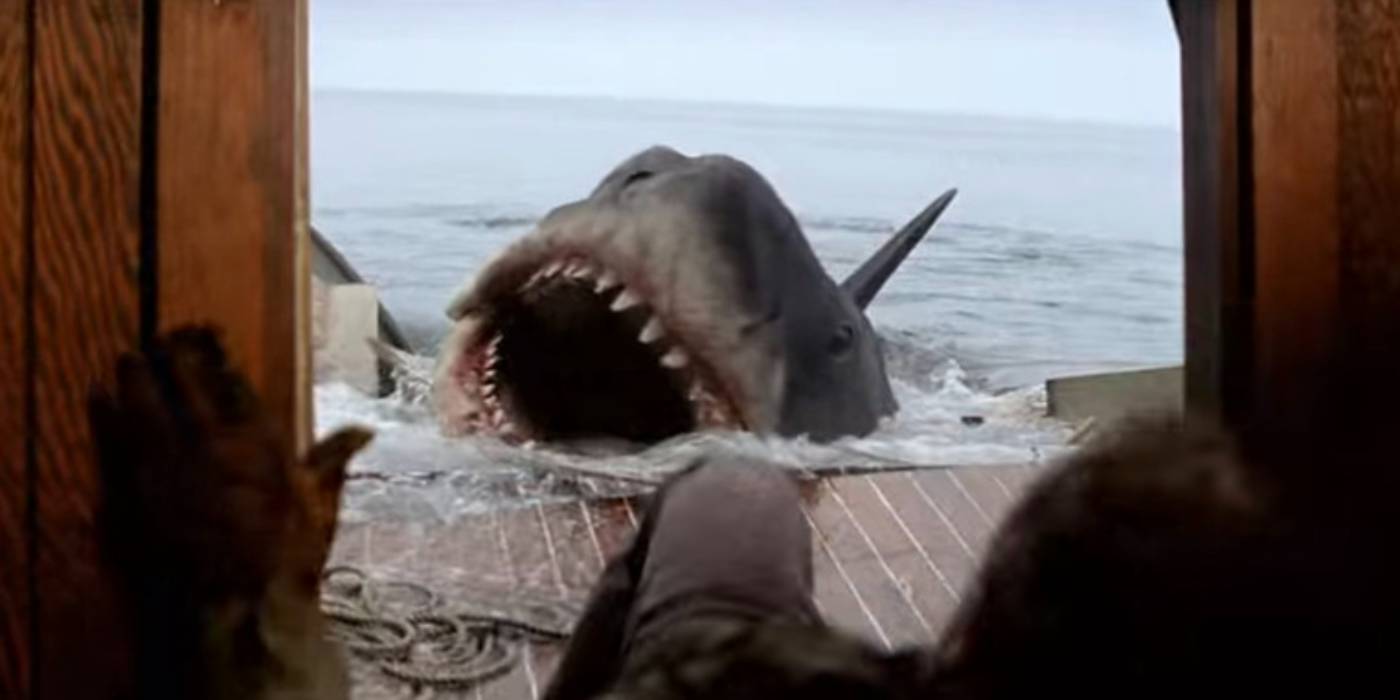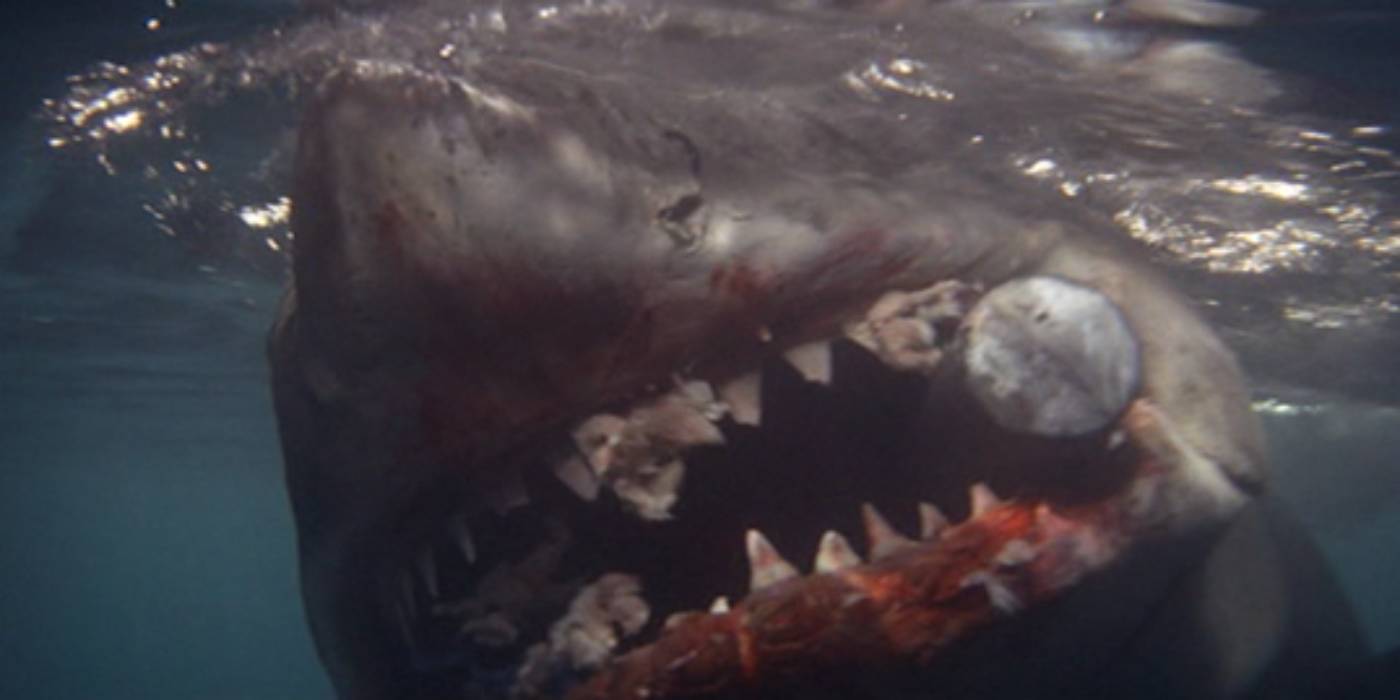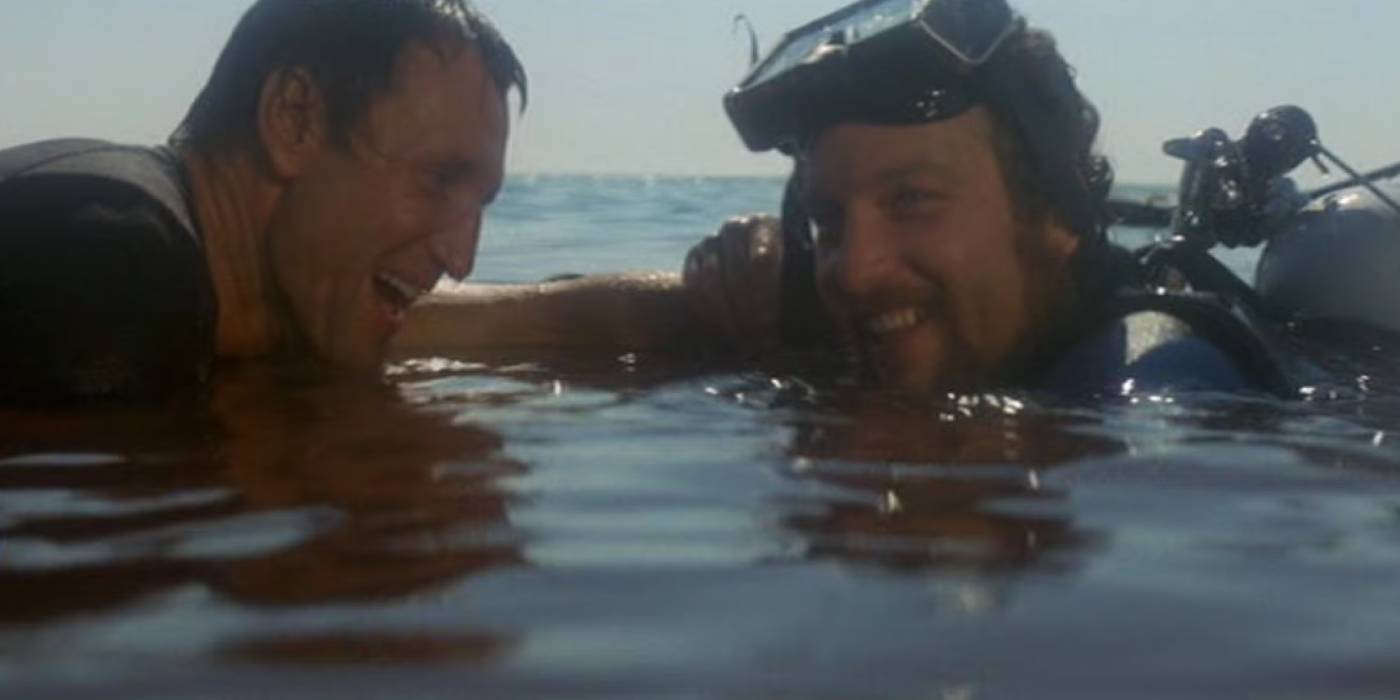
In the summertime coastal town of Amity Island, the tranquility is disrupted by the arrival of a menacing great white shark, turning the upcoming Fourth of July celebration into a local terror. The story unfolds as Police Chief Martin Brody, marine biologist Matt Hooper (played by Richard Dreyfuss), and fisherman Quint (Robert Shaw) team up to put an end to the shark’s deadly spree. This unlikely trio faces a perilous struggle against the shark on open waters in the movie Jaws, which, contrary to Peter Benchley’s novel, sports an ending crafted by Steven Spielberg that proved to be the perfect decision.
The blockbuster hit “Jaws” held the record for the most successful box office at its time (despite contributing to a negative portrayal of sharks), and a key factor in its success was the film’s dramatic ending, particularly the way Brody killed the shark. In contrast to the shark’s demise in Benchley’s book, the movie’s conclusion was more theatrically intense and literally explosive. It is no wonder that Steven Spielberg, a pioneer in summer blockbusters through “Jaws”, advocated for this ending.
Jaws Has Very Different Endings in the Novel & Movie

In their voyage against the menacing shark of Amity Island, the story takes a more ominous turn in the book. Initially, Hooper suffers a gruesome fate as he tries to attack the shark with a spear gun from an underwater cage; the shark swallows Hooper completely. As the tale unfolds, Quint grows increasingly fixated on defeating the shark, disregarding payment for his work, which leads to his demise when he becomes ensnared in a rope connected to a harpoon and is dragged into the abyss with the shark, reminiscent of Captain Ahab. Subsequently, Brody narrowly escapes being eaten by the shark when the heavily exhausted creature suddenly stops moving, fatally injured from the harpooned barrels and other wounds sustained during the lengthy sea battle, and sinks to the ocean floor.
In the movie adaptation of “Jaws“, several key events are changed noticeably, starting with Hooper surviving his encounter with the shark instead of meeting his demise. After the shark jumps onto the boat, the Orca, and swallows Quint in a frenzy, Brody throws an oxygen tank into the shark’s mouth. As the shark charges towards the sinking Orca, Brody shoots at it with a rifle, hitting the tank. This causes the tank to burst, resulting in the shark exploding from the rapid release of compressed air. With some barrels left floating, Hooper and Brody swim back to Amity Island together after surfacing. The stark contrast between these two endings was a topic of discussion between Steven Spielberg and Peter Benchley.
Why Spielberg Wanted to Alter the Ending of Jaws

In the process of deciding how to conclude the film ‘Jaws’ dramatically, Steven Spielberg presented his idea for the finale to Peter Benchley, which included Brody throwing an oxygen tank into the shark’s mouth and firing it. At first, Benchley found this ending excessive and unrealistic. However, Spielberg emphasized that plausibility took precedence over authenticity in a cinematic context. Eventually, Benchley would come to appreciate Spielberg’s idea as the most fitting way to represent ‘Jaws’ on screen.
In an interview with ComicBook about the 50th anniversary of Jaws, Wendy Benchley, widow of author Peter Benchley, explained her late husband’s acceptance of Steven Spielberg’s ending for the film. According to Wendy, Peter understood that while a novel requires more intricate storytelling, movies need a simple A-B-C-D plotline for clarity. Despite some disagreements about the size of the great white shark (with real ones being around 15 feet long compared to the 25-foot shark in Jaws), Wendy acknowledged Spielberg’s exceptional talent and ability to create fear with a larger shark on screen.
In my eyes as a devoted film enthusiast, the grandeur of the Jaws shark and its spectacularly destructive finale turned out to be a tremendous boon for the movie itself.
Why Spielberg Was Right About Changing the Ending of Jaws (& the Size of the Shark)

In Benchley’s chilling novel, the shark is depicted as a monstrous, man-eating creature from the depths, but books often allow for greater creative freedom than movies can afford. The shark in “Jaws,” for instance, is described as an imposing sea predator, much larger and more menacing than its portrayal in the actual film. Despite Spielberg keeping the shark largely out of sight due to technical issues during the production of “Jaws,” the shark had to make its appearance at some point. By exaggerating the size of the great white shark in “Jaws,” Spielberg effectively conveyed the shark as a formidable, terrifying threat to all inhabitants and visitors of Amity Island.
In addition, while the death of the shark in Benchley’s book serves as an effective conclusion to his gloomy and suspenseful narrative, having the shark faint just before eating Brody would have been disappointingly anticlimactic in Jaws the movie, given the violent havoc it wreaks throughout the film. Spielberg’s ending, however, provides a sense of both survival and triumph over the shark after it has claimed numerous lives. Furthermore, the explosive finale of Jaws played a crucial role in the film establishing the modern summer movie season, as Spielberg’s conclusion added a true climactic punch that the novel’s ending lacked.
In the long run, both versions of the Jaws finale effectively catered to their respective platforms. Peter Benchley’s version where Brody narrowly escapes death, contrasts with Spielberg’s where Brody conquers the seemingly unbeatable shark, and an additional victory for Hooper is included. Looking back 50 years later, the choice of adopting Spielberg’s ending played a crucial role in defining Jaws‘s identity and lasting impact on popular culture.
Read More
- Hazbin Hotel season 3 release date speculation and latest news
- Where Winds Meet: Best Weapon Combinations
- Zootopia 2 Reactions Raise Eyebrows as Early Viewers Note “Timely Social Commentary”
- Victoria Beckham Addresses David Beckham Affair Speculation
- Where Winds Meet: How To Defeat Shadow Puppeteer (Boss Guide)
- The Death of Bunny Munro soundtrack: Every song in Nick Cave drama
- Is There a Smiling Friends Season 3 Episode 9 Release Date or Part 2?
- Final Fantasy 9 Receives Special 25th Anniversary Trailer
- Every Wicked: For Good Song, Ranked By Anticipation
- Where to Find Tempest Blueprint in ARC Raiders
2025-07-20 04:40